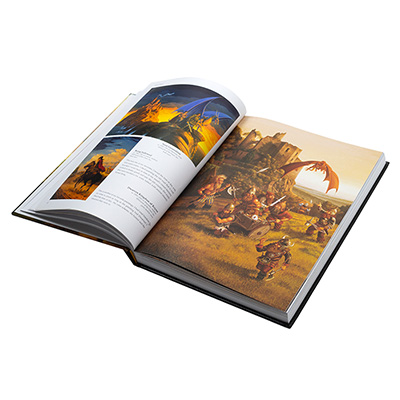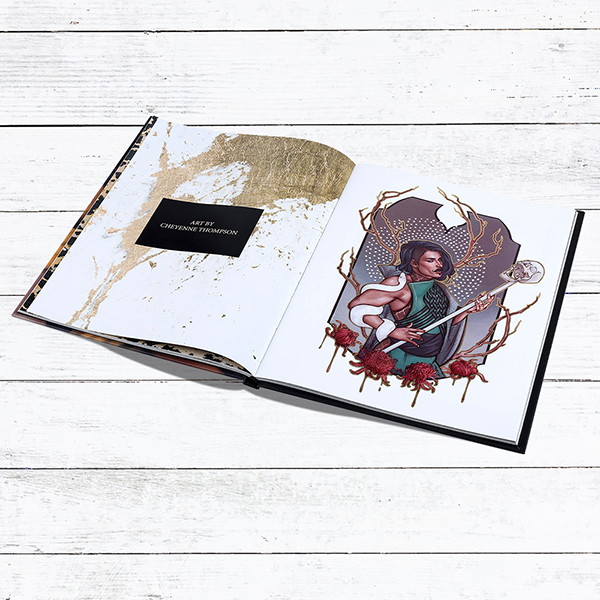Ways to Select the Right Paper for Your art book
Ways to Select the Right Paper for Your art book
Blog Article
Discover the Necessary Guide to Art Book Printing for Aspiring Artists and Publishers
As an aspiring musician or publisher, recognizing the subtleties of art book printing is vital to bringing your vision to life. What are the vital aspects you should focus on to develop a spectacular art book that truly represents your work?
Recognizing Various Kinds Of Art Books
When you dive right into the globe of art books, you'll promptly discover that they come in numerous kinds, each tailored to different creative expressions and target markets. Coffee table publications frequently showcase spectacular visuals, excellent for informal surfing, while essays dive deep right into a private artist's work, supplying context and insights. If you're interested in specific art activities, event magazines offer thorough documentation of programs, featuring essays and reviews.
For instructional purposes, art handbooks and strategy publications guide you through numerous tools and designs, making them crucial for aiming musicians. Restricted version or artist publications obscure the lines between art and literature, often including one-of-a-kind design components or handmade attributes. Recognizing these types aids you determine what resonates with you and what might best match your audience. Each format serves its objective, and knowing their distinctions can improve your art book trip.
Selecting the Right Paper and Materials
Choosing the appropriate paper and materials can significantly impact the total quality and feeling of your art book. For dynamic shades and detailed information, opt for a glossy coating or a heavyweight matte paper that enhances aesthetic depth.
Believe about the weight of the paper, also. Thicker choices often provide a more professional look, while lighter papers can lower printing expenses. Don't ignore the binding products; a sturdy cover can shield your pages and add to guide's aesthetic.
Ultimately, take into consideration sustainability. Environment-friendly alternatives are gaining popularity and can reflect your worths as an artist. By carefully choosing your paper and products, you'll guarantee that your art book not just looks terrific however likewise really feels special in the hands of your visitors.

Picking the very best Printing Techniques
When it concerns printing your art book, selecting between offset and electronic printing can considerably influence your end product. You'll additionally desire to take into consideration just how paper high quality influences the total look of your art work. Let's explore these crucial printing methods to locate the ideal suitable for your job.
Countered vs. Digital Printing
While both countered and electronic printing have their benefits, choosing the appropriate technique for your art book can considerably affect the last product. Offset printing provides premium photos and vibrant shades, making it ideal for larger print runs. Eventually, your selection must line up with your imaginative vision and distribution method, ensuring that your art book shows the high quality you desire.
Paper Top Quality Factors To Consider
Selecting the best paper top quality can significantly enhance the aesthetic charm and responsive experience of your art book. Beginning by taking into consideration the weight and structure of the paper. Heavier paper typically feels even more glamorous and can much better display vibrant shades and detailed details. For prints, a shiny surface can make photos pop, while a matte finish provides a softer, more refined look. Don't forget the paper's brightness; brighter sheets can improve shade precision and contrast.
Next, think about the sustainability of your option. Eco-friendly options are becoming significantly prominent and can appeal to environmentally-conscious readers. Ultimately, demand examples to see how various documents work with your artwork, guaranteeing the end product mirrors your vision completely.
Ensuring Shade Precision in Your Prints
To achieve sensational prints, you need to concentrate on color accuracy from the beginning. You'll desire to use shade calibration techniques to confirm your screen and printer remain in sync. Furthermore, proofing your work prior to the final print run can assist catch any type of disparities, guaranteeing your art looks just as you envisioned.
Color Calibration Techniques
Guaranteeing shade precision in your prints starts with effective shade calibration strategies that aid maintain uniformity in between your electronic photos and final printed products. First, calibrate your monitor using equipment calibration tools to attain the very best shade representation. This validates that what you see on-screen matches what gets printed. Next off, choose a color profile fit for your printing process, like CMYK for print materials. Regularly inspect your printer's setups and maintain it to prevent color shifts. It's likewise important to make use of top quality paper that matches your inks, as different surface areas can substantially impact shade outcome. By continually applying these strategies, you'll enhance the general high quality of your art prints and better convey your artistic vision.
Proofing for Accuracy
While you could believe your electronic pictures await print, proofing is vital for achieving color precision. Prior to dedicating to a full print run, constantly ask for a proof from your printer. This allows you to see just how colors convert from display to paper. Compare the proof with your calibrated display to identify any type of discrepancies. Pay interest to saturation, brightness, and shade, as these variables can dramatically influence your last item.
If modifications are needed, communicate clearly with your printer concerning your news desired results. Do not think twice to demand multiple evidence if required; it's worth the investment to obtain it right. Eventually, extensive proofing assurances that your artwork is stood for as you pictured it, maintaining your imaginative integrity throughout the printing process.

Creating Layouts That Enhance Your Art Work
When you make formats for your art book, it's necessary to consider how each aspect connects with your artwork. Aim for a balance between visuals and message, ensuring neither outweighes the other. Usage white room tactically; it gives your artwork space to take a breath and accentuates its information.
Consider the flow of your book. Prepare images in such a way that overviews the reader's eye, developing a narrative or thematic development. art book. Differ the sizes and positionings of your art work to maintain the format vibrant and interesting
Select typefaces that match your artwork without distracting from it. Keep text concise and pertinent, providing context or understanding that enhances the audience's experience.
Ultimately, test various layouts. Print samples to see how the layouts equate on paper, and adjust as needed. By thoughtfully designing your formats, you'll produce a visually engaging art book that reverberates with your audience.
Binding Alternatives for an Expert Finish
Picking the right binding choice can considerably affect the overall discussion of your art book. You'll wish to consider both looks and toughness when making your option. Popular options consist of ideal binding, which offers a sleek appearance and is best for thicker books; saddle sewing, perfect for smaller sized pamphlets; and spiral binding, which permits pages to lay flat for simple watching.
If you're intending for a premium feeling, case binding is an excellent option, supplying a tough cover and a professional appearance (art book). Don't ignore the cover material; alternatives like cloth, leather, or a shiny finish can elevate your book's allure
Whatever option you pick, make certain it complements your artwork and enhances browse around this web-site the visitor's experience. Take your time to weigh the pros and disadvantages of each method, so your final item reflects the high quality of your imaginative vision.
Preparing Your Apply For Publish Preparedness
To guarantee your art book is print-ready, you'll need to pay attention to file prep work. Start by setting your paper dimension to match your wanted print dimensions. Use high-resolution photos-- 300 DPI is the standard-- to determine sharp, lively visuals. Transform your documents to CMYK setting, as this color area is ideal for printing. Do not neglect to include bleed areas, usually an added 0.125 inches around your web pages, to prevent any white sides after cutting.
Likewise, continue reading this install your font styles or convert text to lays out to prevent any type of font style issues. Save your work in a PDF format, as this is the most accepted file type for printers. Confirm your declare any typos or layout mistakes, as adjustments can be pricey after the reality. Think about producing a proof to review prior to the last print run. Following these actions will assist you accomplish a polished, professional art book.
Frequently Asked Inquiries
What Is the Ordinary Expense of Printing an Art Book?
The standard expense of printing an art book differs, however you can expect to pay anywhere from $5 to $20 per duplicate, depending upon factors like size, paper top quality, and printing quantity.
Exactly How Can I Locate a Reliable Printing Business?
To find a reputable printing firm, beginning by investigating on-line evaluations and asking other artists for recommendations. Compare quotes, check profiles, and communicate your demands clearly to assure they understand your vision and top quality expectations.
What Is the Regular Turnaround Time for Printing?
The normal turnaround time for printing varies but normally varies from one to four weeks. Variables like project intricacy and volume can impact this. Constantly validate with your picked printer for particular timelines and assumptions.
Can I Publish My Art Book in Limited Quantities?
Yes, you can certainly publish your art book in limited amounts. Numerous printing firms offer short-run choices, permitting you to produce just the number you need, making it easier to handle prices and inventory.
What Legal Considerations Should I Know for My Art Book?
You need to consider copyright, licensing agreements, and design launches when developing your art book. Make sure you can make use of all photos and message, securing on your own from possible lawful issues later on.
Report this page